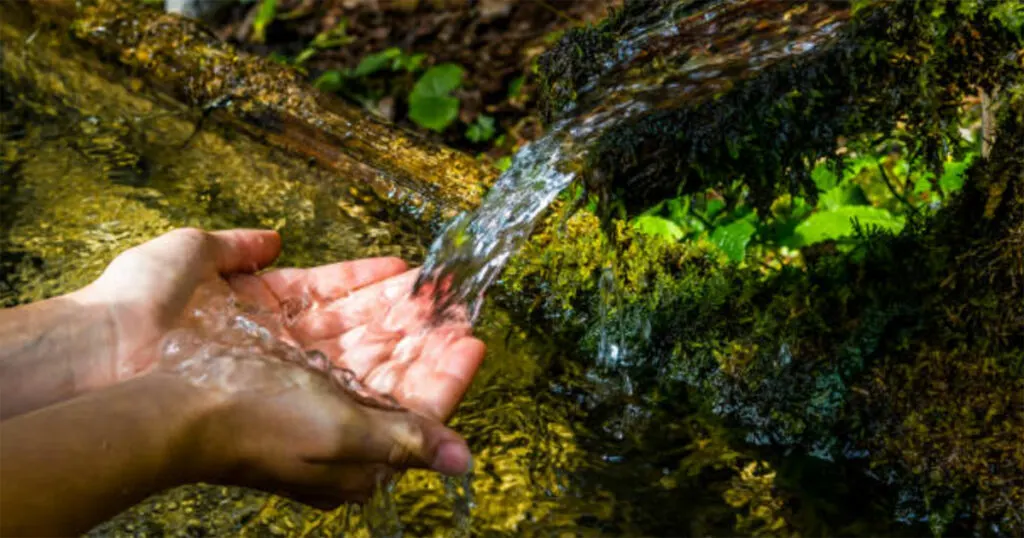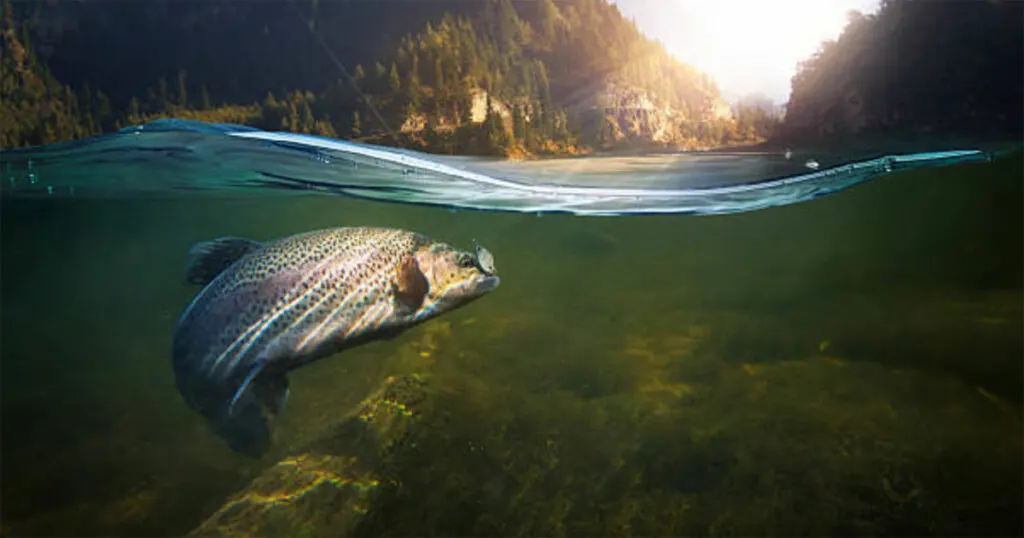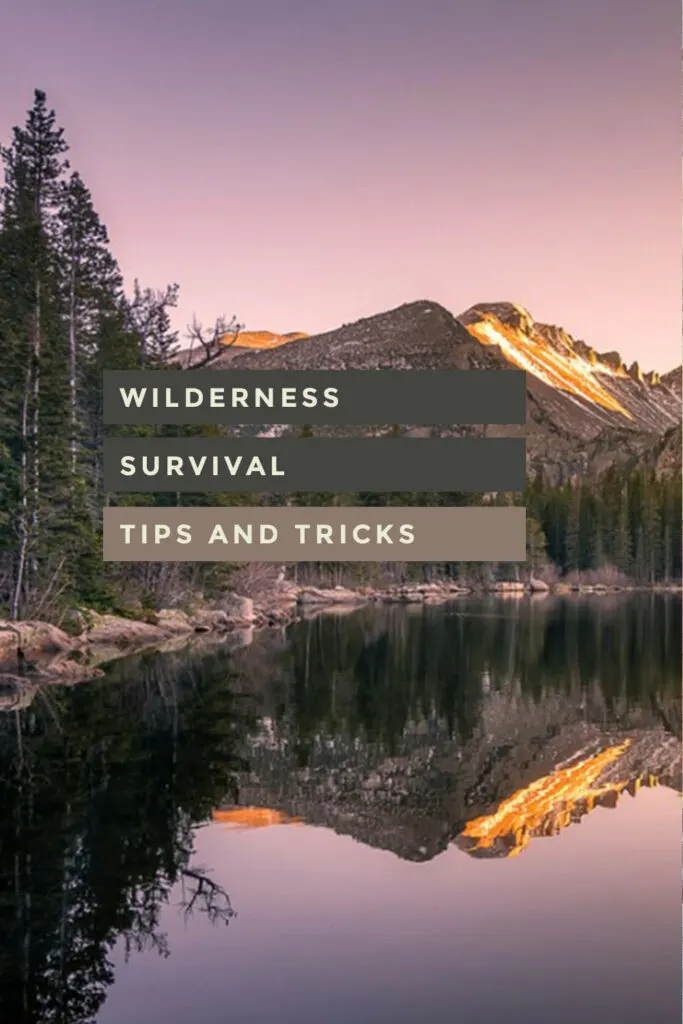Survival is a fundamental human instinct that has been honed over thousands of years of evolution. Whether it’s a natural disaster, a medical emergency, or a wilderness adventure went wrong, knowing how to survive in difficult situations can be the difference between life and death. This article will share some essential survival guides that can help you prepare for and navigate challenging situations.
Vital Survival Tips to Help You in the Wilderness
The wilderness can be a dangerous and challenging environment, and it’s important to have the right knowledge and skills to handle it.
Here are the essential tips to help you survive in the wilderness and increase your chances of making it back to civilization unharmed:
Start a Fire To Keep Warm

Here are some tips on how to build a fire in the wilderness:
- Gather dry materials: Look for dry leaves, twigs, and branches to use as kindling. You’ll also need larger logs to keep the fire burning.
- Find a good location: Choose a spot that is sheltered from the wind and at least 15 feet away from any flammable materials.
- Build a fire pit: Use rocks or a shovel to create a small pit for the fire. This will contain the flames and prevent them from spreading.
- Start with small kindling: Use the dry leaves and twigs to start a small fire. Blow on the embers gently to help the fire grow.
- Add larger logs: Once the fire is established, gradually add larger logs to keep it burning.
Building a Survival Shelter To Stay Warm and Safe

Making your own shelter from scratch is one of the survival tips that you’ll need to consider.
Here are some tips on how to build your shelter in the wilderness:
- Choose a location: Look for a spot that is sheltered from the wind and at least 15 feet away from any hazards such as dead trees, cliffs, or waterways.
- Gather materials: Use natural materials such as branches, leaves, and pine needles to create a framework for your shelter.
- Build a frame: Use long branches or logs to create the frame of your shelter. Lean them against a tree or rock to create a simple A-frame structure.
- Fill in the walls: Use smaller branches, leaves, and pine needles to fill in the walls of your shelter. Make sure to create a thick layer to keep out wind and rain.
- Add a roof: Use larger branches or a tarp to create a roof for your shelter. Make sure it is slanted to allow water to run off.
Setting Priorities Is Crucial for Survival in the Wilderness
In a survival scenario, the rule of threes can serve as a guide: the average person can survive about
- 3 hours without shelter,
- 3 days without water, and
- 3 weeks without food.
While these timelines may vary based on the individual and environment, the rule of threes offers a helpful template for determining what actions to prioritize when in the wilderness.
Looking for a Source of Clean Water

Finding a clean water source is essential for survival in the wilderness. However, not all water sources are safe to drink from. In this section, we will provide you with some tips on how to look for a clean source of water in the wilderness.
- Look for moving water: Running water is less likely to contain harmful bacteria and parasites than stagnant water.
- Avoid water sources near civilization: Water sources near human settlements may be contaminated with sewage or other pollutants.
- Look for clear water: Clear water is less likely to contain harmful contaminants than murky or cloudy water.
- Check for animal activity: Animal activity such as tracks or scat may indicate that the water source is safe to drink from.
- Use a water filter or purifier: If you have a water filter or purifier, use it to remove any potential contaminants from the water. Check out our list of useful and essential camping gear.
- Boil the water: If you don’t have a filter or purifier, you can boil the water to kill any harmful bacteria or parasites.
Look for Sources of Food

Looking for food is one of the survival tips that you need to learn. Here are some tips on how to look for sources of food in the wilderness:
- Identify edible plants: Learn to identify edible plants in the area you will be in. It’s important to know which plants are safe to eat and which are poisonous.
- Look for wildlife: Look for signs of wildlife such as tracks, droppings, and feathers. These can give you an idea of what animals are in the area and what their patterns are.
- Set traps and snares: Learn how to make and set traps and snares to catch small game like rabbits, squirrels, and birds.
- Fish: If there is a water source nearby, try fishing using a line and hook or makeshift fishing gear.
- Insects: Insects such as grasshoppers and crickets can provide a good source of protein.
Maintaining Good Hygiene
The wilderness is teeming with bacteria, pathogens, and parasites that can enter the body easily through the food you’ll eat and open wounds, leading to a higher risk of illness. To minimize this risk, it’s important to practice good hygiene and cleanliness.
Keeping yourself clean can significantly reduce the risk of becoming sick and ensure that you maintain good health. Remember that even a few days of illness can quickly deplete your resources and decrease your chances of survival.
Here are some tips on how to maintain good hygiene in the wild:
- Wash your hands: Wash your hands regularly, especially before handling food or treating wounds.
- Bathe: Try to bathe or clean yourself regularly. This can help prevent skin infections and other health issues.
- Use hand sanitizer: If water is scarce, use hand sanitizer to clean your hands.
- Keep your gear clean: Keep your gear and equipment clean to prevent the buildup of dirt and bacteria.
- Dispose of waste properly: Properly dispose of human waste and other trash to prevent contamination and the spread of disease.
Keeping a Clear Mind in Survival Situations
In a life-or-death survival situation, your mind is your most valuable tool. However, the human brain’s amygdala will activate a fight-or-flight response by pumping stress hormones throughout your body, making it challenging to keep a clear head. Therefore, it’s crucial to remain calm and assess the situation before taking any action. Taking a moment to collect your thoughts will help you eliminate unnecessary risks and minimize energy expenditure until you have a solid plan in place. Making avoidable mistakes can be lethal, especially in the wilderness. Therefore, keeping a clear mind is essential for anyone facing a survival situation.
Attracting the Attention of Rescuers in a Survival Situation
If you find yourself in a survival situation, it’s essential to signal nearby search and rescue teams as soon as possible. One way to do this is by using visual and auditory signals such as mirrors, whistles, and smoke to alert rescuers and help them locate your position. Additionally, it’s a good idea to keep a solar battery charger in your survival kit to ensure your cell phone stays charged, especially if you’re traveling alone. By keeping yourself connected, you can quickly call for help and communicate your location to rescuers for a swift evacuation.
Test your Bushcraft Skills
Knowing basic bushcraft skills such as navigation or knot-tying is important, but it’s equally vital to put your knowledge to the test before an emergency arises. Conducting regular preparedness drills can help you determine your strengths and weaknesses in realistic scenarios, allowing you to improve and refine your skills. While knowledge is essential, practice is the key to mastering bushcraft and increasing your chances of survival in the wilderness. So, make sure to test your skills regularly to ensure that you’re always prepared for the unexpected.
Make the Most of Available Resources
When you’re in a survival situation, it’s essential to use every available resource at your disposal to increase your chances of making it through. Since you’ll likely need to travel light and move quickly, you’ll need to gather food and water as you go, and carry multi-purpose items that provide a lot of utility for their weight.
In some cases, you may not have access to a standard survival kit, and you’ll need to rely on your ingenuity and problem-solving skills to make do with what you have. For example, you can use a plastic bag, a length of paracord, and some duct tape to create a shelter that protects you from the elements.
By using your creativity and making the most of the resources around you, you can increase your chances of survival in even the most challenging wilderness situations. Don’t limit yourself to traditional survival gear and techniques – be open to new ideas and approaches that may help you stay alive and thrive in the wild.
First Aid: A Survival Skill
First aid is a crucial skill in any survival situation, especially survival in the wilderness. Injuries and illnesses can happen unexpectedly, and knowing how to provide basic first aid can save a life or prevent a minor injury from becoming more severe.
One of the most important aspects of wilderness first aid is to remain calm and assess the situation before taking any action. This helps you to avoid making hasty decisions that could make the situation worse.
The next step is to identify the injury or illness and provide the necessary treatment. This could include cleaning and dressing a wound, immobilizing a broken bone, or administering CPR if needed. Knowing how to handle these situations is vital in keeping yourself or a companion alive until medical help arrives.
It is also important to have a well-stocked first aid kit that includes essential items such as bandages, disinfectant, painkillers, and other medications. A survival kit should be part of your gear, and it should contain these essentials.
In addition to first aid training and a well-equipped first aid kit, it is essential to have a communication device to signal for help in case of an emergency. This could be a satellite phone, a personal locator beacon, or a whistle. The key is to have a way to alert others of your location and need for assistance.
In summary, first aid is a crucial survival technique that can help you manage injuries and illnesses in the wilderness. Knowing how to assess a situation, identify injuries, and provide the necessary treatment, along with having a well-stocked first aid kit and communication device, can make all the difference in a survival situation.
Common Risks and Dangers in the Wilderness: Understanding Hypothermia and Other Hazards
There are several common risks and problems one may encounter while in the wilderness. Some of them include:
- Hypothermia – this is a condition where the body loses heat faster than it can produce, resulting in abnormally low body temperature. Symptoms include shivering, confusion, and loss of coordination.
- Dehydration – this is a condition where the body loses more fluids than it takes in, leading to an imbalance in the body’s electrolyte levels. Symptoms include thirst, dry mouth, fatigue, and dark urine.
- Heat exhaustion – this is a condition where the body overheats due to exposure to high temperatures and humidity. Symptoms include heavy sweating, rapid pulse, dizziness, and muscle cramps.
- Sunburn – this occurs when the skin is overexposed to ultraviolet radiation from the sun, leading to red, painful, and swollen skin.
- Poisonous plants and animals – there are several poisonous plants and animals in the wilderness that can cause harm if ingested or if their toxins come in contact with the skin.
- Injuries – injuries such as broken bones, cuts, and bruises are common in the wilderness, and they can make survival difficult.
To prevent and manage these risks, it is important to have the necessary knowledge, following survival tips, skills, and tools, including first aid training and a well-stocked first aid kit. Hypothermia, for example, can be treated by moving the affected person to a warm and dry place, removing any wet clothing, and providing warm clothing and blankets. It is also important to monitor the person’s breathing and pulse and seek medical attention if necessary.
Getting Ready for Wilderness Adventures
Embarking on a wilderness adventure can be an exciting and unforgettable experience, but it requires careful preparation and planning to ensure a safe and enjoyable journey. Before you head out, it’s important to familiarize yourself with the area you will be exploring, assess the potential risks and hazards, and prepare accordingly. This can involve packing essential items, such as appropriate clothing, food, and water, as well as equipment and tools that may come in handy in unexpected situations. Additionally, it’s important to brush up on your survival skills and learn how to make the most of the resources available to you in the wilderness. By taking the time to prepare and plan ahead, you can increase your chances of a successful and fulfilling wilderness adventure.

